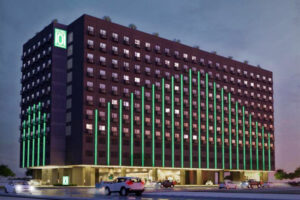The Philippines’ economic managers said on Thursday that they are on track to meet the targets under the government’s medium-term fiscal program.
“We’re on track. In fact, we’re doing better than our original plan,” Department of Finance (DoF) Secretary Benjamin E. Diokno said during the Philippine Economic Briefing in Toronto, Canada.
Under the medium-term fiscal framework, the government aims to reduce the debt-to-gross domestic product (GDP) ratio to less than 60% by 2025. At the same time, it expects to decrease the deficit-to-GDP ratio to 3% by 2028.
“We’re confident we’ll get there. We inherited a much superior tax system. We are going to improve tax administration through digitalization. We intend to collect more revenues,” he added.
The deficit-to-GDP ratio at the end of March was 4.84%, lower than the 6.41% recorded in the first quarter of the previous year and the 7.33% seen in 2022.
The government has set the deficit ceiling for this year at P1.499 trillion, equivalent to 6.1% of the gross domestic product.
Meanwhile, the country’s debt-to-GDP ratio stood at 61% as of the end of March, still above the 60% threshold considered manageable by multilateral lenders for developing economies.
Secretary Arsenio M. Balisacan of the National Economic and Development Authority (NEDA) expressed the view that economic growth will continue to demonstrate resilience.
“Despite the headwinds, we expect the economy to grow 6-7% this year. That’s quite impressive given the downscaling of growth prospects in many other economies,” he said.
In the first quarter, the Philippine economy expanded by 6.4%, which was slower than the revised 7.1% growth in the previous quarter and the 8% growth recorded a year ago.
The government has set a growth target of 6-7% for this year and aims for a growth range of 6.5-8% from 2024 to 2028.
“In the longer term, we expect to grow by 6.5-8%. With that kind of growth, we should be able to dramatically transform the economy and reduce poverty. We need a lot of structural and policy reforms. The aim is to increase the potential growth of the economy,” he added.
NEDA’s Mr. Balisacan also emphasized the need to “expand and diversify” the economy in order to enhance its resilience against external shocks.
“In the last couple of years, the economy has been dependent on demand growth. Nearly two-thirds of the economy is driven by consumption growth. For the economy to sustain its rapid transformation, we need to go beyond that, hence investment, we are trying to get new drivers, like tourism, mining, creatives, and many other sectors,” he said.
“Sound fiscal management gives us solid financial footing to invest more in high-growth sectors that will be of benefit to more Filipinos,” Mr. Diokno added.
The Finance chief said that the government is also “pursuing structural reforms to accelerate investment and trade in the Philippines.”
He highlighted ongoing reforms such as the Corporate Recovery and Tax Incentives for Enterprises (CREATE) Law, which has reduced corporate income tax rates and provided incentives.
Under CREATE, the Fiscal Incentives Review Board has granted incentives to 39 projects, with an investment capital of P694 billion or $12.4 billion. These projects are expected to generate more than 28,000 jobs.
“We’ve been promising a lot of reforms, some tough, others tougher. We are confident we can do it,” Mr. Diokno added.
Mr. Balisacan said that the private sector’s involvement is necessary for reaching the country’s socio-economic agenda.
“This sector is the country’s drive of growth and innovation, financial resources, and technology and managerial capacities. Its involvement in public sector projects will result in better public services, lower consumer prices, and improve quality of life for all Filipinos,” he said.
“We are creating a policy environment conducive to effective, strategic, and growth-enhancing public-private partnerships (PPPs),” Mr. Diokno added.
As of June 30, the government has awarded 255 PPP projects with an estimated total cost of P2.58 trillion or $46.8 billion.
Mr. Balisacan said that there are also 107 projects in the pipeline, amounting to a value of P2.28 trillion or $41.3 billion.
These projects encompass various sectors, including transport (51), road (15), and property development (12), among others.
“More are being identified and evaluated for possible inclusion in this list,” Mr. Balisacan added.
PARTNERSHIPS
During the briefing, Mr. Diokno also expressed the government’s interest in collaborating with Canada on potential partnerships in key industries.
“We have uncharted waters to explore in terms of trade and investments in mutual areas of interest, including electronics manufacturing, machinery and electricity, mining, and agriculture,” he said.
UBS Securities Canada’s Managing Director Alain Auclair also acknowledged the country’s robust macroeconomic fundamentals and its capacity to withstand external headwinds.
“And with capable leadership at the forefront of a robust economic plan, the Philippines is poised for a promising economic future,” he added.
Sven List, senior vice president of Export Development Canada, said that they are exploring opportunities to access key markets in the Indo-Pacific region next year.
“Our strategy begins with industrial sectors where Canada has a proven record of expertise and the ability to deliver value fast. It happens to be the same sectors mentioned earlier today. Areas again like agrifood, infrastructure, and clean tech––areas in which countries like the Philippines are making important investments and where Canadian businesses are ready to offer goods, services, and their own investment,” he said.
In a Facebook post, the Department of Finance said that B2Gold Corp., a Vancouver-based low-cost international senior gold producer, has expressed interest in expanding its operations in the Philippines. The mining firm currently operates a gold mine in Masbate. — Luisa Maria Jacinta C. Jocson






